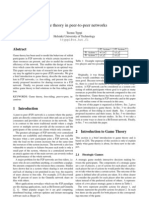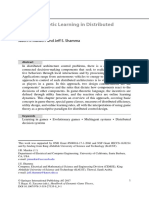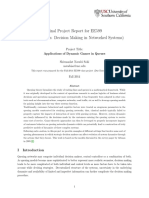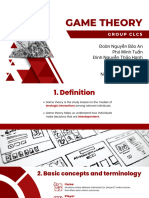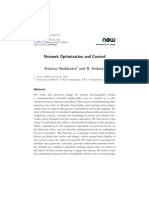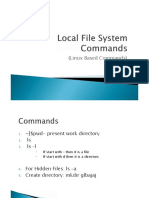0% found this document useful (0 votes)
179 views6 pagesGame Theory in Communication Networks
Game theory concepts can be used to analyze communication networks where there are competitive actors whose individual actions impact the network performance and other actors. The document discusses how networking has evolved from centralized to decentralized systems, and introduces basic game theory concepts like strategic games, utility functions, Nash equilibria, and applications to problems like pricing, congestion control, routing, and competition among network providers.
Uploaded by
nangaayissiCopyright
© © All Rights Reserved
We take content rights seriously. If you suspect this is your content, claim it here.
Available Formats
Download as DOC, PDF, TXT or read online on Scribd
0% found this document useful (0 votes)
179 views6 pagesGame Theory in Communication Networks
Game theory concepts can be used to analyze communication networks where there are competitive actors whose individual actions impact the network performance and other actors. The document discusses how networking has evolved from centralized to decentralized systems, and introduces basic game theory concepts like strategic games, utility functions, Nash equilibria, and applications to problems like pricing, congestion control, routing, and competition among network providers.
Uploaded by
nangaayissiCopyright
© © All Rights Reserved
We take content rights seriously. If you suspect this is your content, claim it here.
Available Formats
Download as DOC, PDF, TXT or read online on Scribd
/ 6















